Euphorbiaceae
Macaranga monandra
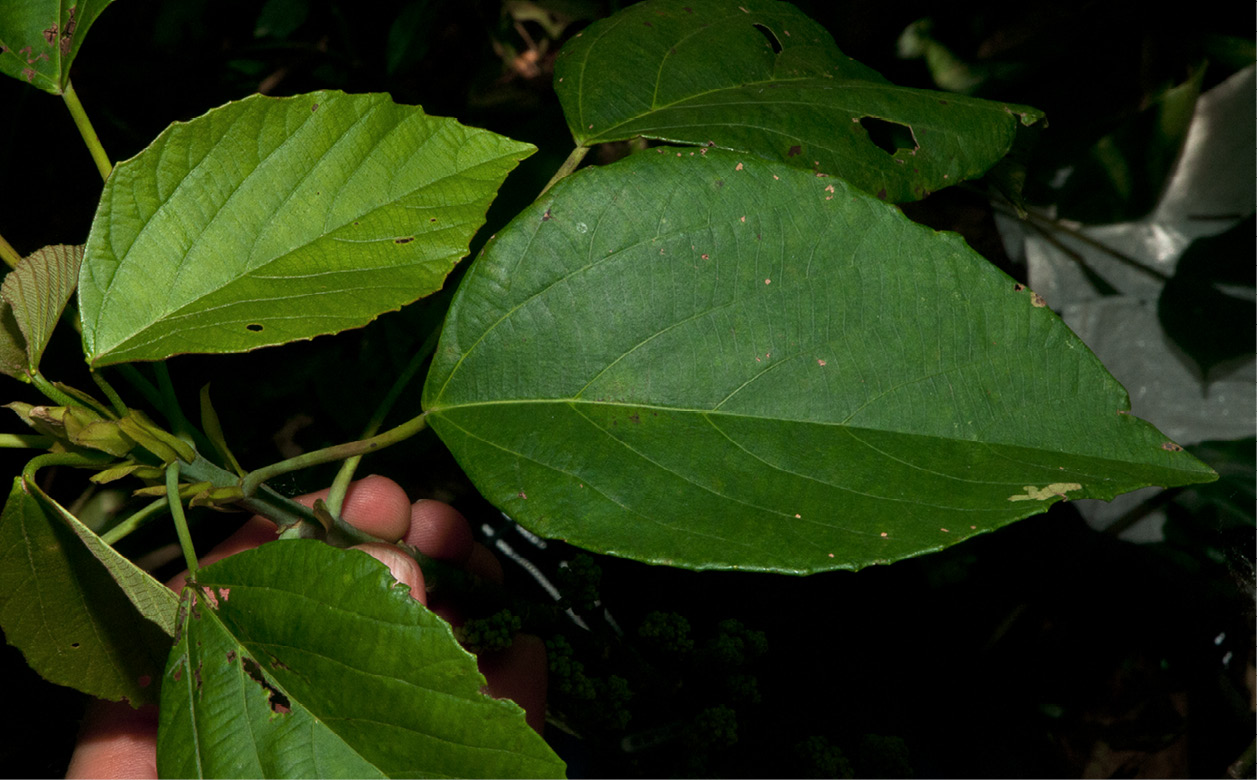
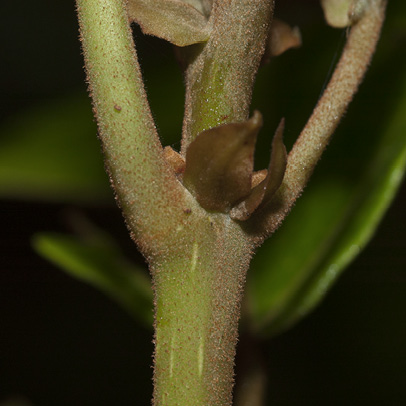
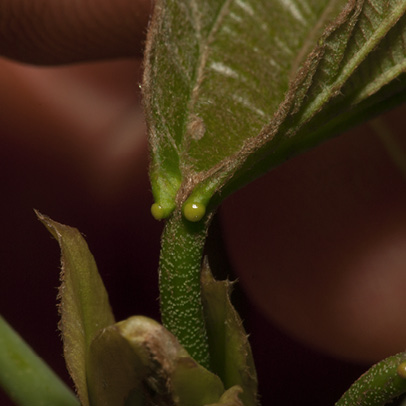
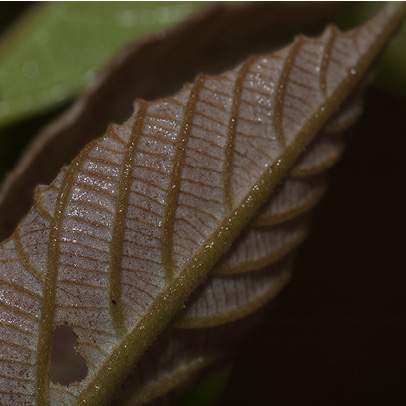
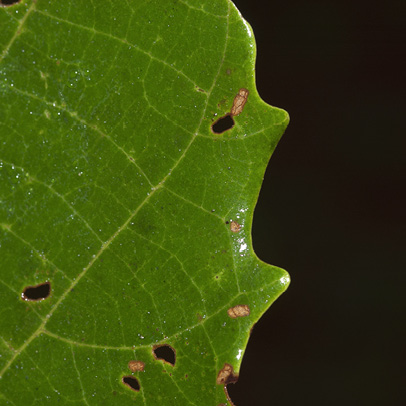
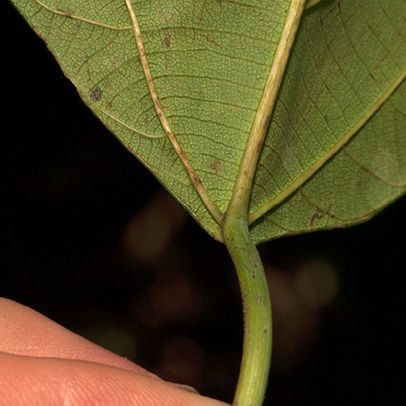
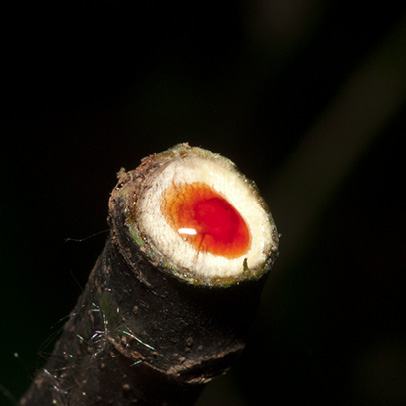
- Mature leaves, upper and lower surfaces.
- Stipules at the base of petiole.
- Glands at the base of young leaf.
- Midrib and venation, young leaf, lower surface.
- Teeth at the margin of mature leaf, upper surface.
- Venation at the base of mature leaf, lower surface.
- Red latex from cut end of twig.
General Information
The genus Macaranga contains several species of trees and lianas in the area. They have very obvious spines on the main trunk and larger branches. The spines can be up to 10 cm long. Be careful not to grab one of these for support on a slippery forest path. All over the lower surface of the leaves there are tiny dots which may be red, brown or yellow. This species is recognised by the very short hairs on the petiole, visible with a lens, and the large blunt teeth. The leaves are up to 30 cm long and they are widest towards the base, but they can be quite variable in shape. The stipules are only present on the youngest leaves; they soon fall off. The pair of glands at the base of the leaf are usually very obvious on young leaves but often harder to see on older leaves.
Ecology
This species occurs in well-lit areas such as roadsides, light gaps and riverbanks. It is fast growing and will flower and fruit as a shrub.
Distribution
Distribution: Nigeria to Tanzania and Angola.
